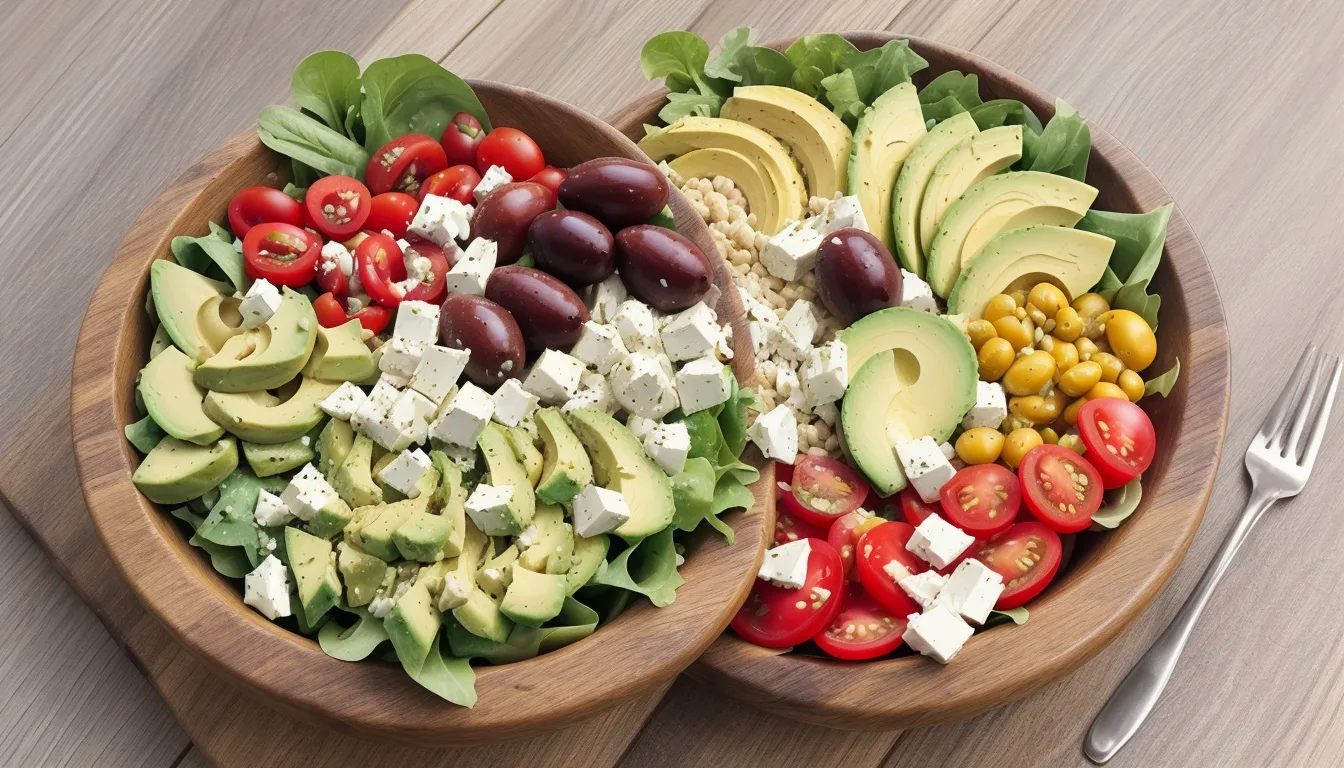
The low carb Mediterranean diet grows popular. It mixes the benefits of the traditional Mediterranean diet with fewer carbs. This plan uses whole foods, healthy fats, and lean proteins. It works well for weight loss, heart strength, and blood sugar control. In this article we explain the low carb Mediterranean diet, list its benefits, give simple hints to begin, show a sample meal day, and answer common questions. It is a tasty route to better health.
What Is the Low Carb Mediterranean Diet?
The Mediterranean diet uses foods from nations near the Mediterranean Sea. Vegetables, fruits, nuts, olive oil, beans, whole grains, moderate fish, poultry, and dairy fill its menu. Health experts admire this diet for long life and heart health.
The low carb Mediterranean diet builds on this root. It cuts back on high-carb foods like bread, pasta, rice, potatoes, and sweets. It shifts focus to fats, proteins, and non-starchy vegetables. Reducing carbs helps control blood sugar, limits insulin issues, and signals the body to burn more fat. It keeps a close bond with Mediterranean cooking.
Key Benefits of a Low Carb Mediterranean Diet
Following a low carb Mediterranean plan brings many good effects:
-
Weight Loss and Management
Eating fewer carbs can lower hunger. This small change can support fat loss and a healthy weight. -
Heart Health
Olive oil and fatty fish add fats that help lower bad cholesterol and support blood vessels. -
Blood Sugar Control
Fewer carbs help keep blood sugar levels steady. This can aid people with type 2 diabetes or prediabetes. -
Reduced Inflammation
Vegetables, nuts, and olive oil include antioxidants. These fight inflammation linked with many illnesses. -
Sustainability and Taste
This eating plan is not a strict fad. It uses tasty foods that you can enjoy every day.
Core Components of the Low Carb Mediterranean Diet
To follow this diet, keep these food groups close in your meals:
-
Healthy Fats
Olive oil serves as the main fat. Avocados, nuts like almonds and walnuts, and fatty fish also add good fats. These fats keep the heart and brain strong. -
Protein Sources
Include fish, poultry, eggs, and dairy like cheese and yogurt. When you pick red meat, choose lean cuts and eat it rarely. -
Non-Starchy Vegetables
Eat leafy greens such as spinach and kale, plus peppers, zucchini, eggplant, tomatoes, and broccoli. They add fiber, vitamins, and color to your plate without extra carbs. -
Limited Low-Glycemic Fruits
Enjoy berries like strawberries, blueberries, and raspberries. They add taste and fiber in small serving sizes. -
Nuts and Seeds
Snack on walnuts, almonds, flaxseeds, and chia seeds. These add protein, healthy fats, and more nutrients. -
Minimal Grains and Starches
Limit bread, pasta, and rice. Replace them with low carb choices like cauliflower rice or shirataki noodles.
How to Get Started: Simple Tips for Transitioning
Follow these steps to change your habits:
-
Cut Back on Grains
Slowly lower bread, pasta, potatoes, and rice. Try vegetables that work like grains. -
Use Olive Oil First
Cook with extra virgin olive oil. Drizzle it on your meals and use it in dressings. -
Fill Your Plate with Non-Starchy Vegetables
Add many colorful vegetables to each meal. -
Eat Fatty Fish Often
Aim for salmon, mackerel, or sardines twice a week for needed omega-3 fats. -
Switch to Nuts and Cheese for Snacks
When you get hungry between meals, reach for nuts or cheese. -
Season with Herbs and Spices
Use rosemary, oregano, thyme, garlic, and lemon juice. They add good taste to your food. -
Keep Hydrated and Mind Your Portions
Drinking enough water and watching portions help you stay on track.
Sample Low Carb Mediterranean Diet Meal Plan
Below is an example day to show how varied and tasty this plan can be:
-
Breakfast:
Greek yogurt with walnuts, chia seeds, and a small handful of blueberries. -
Lunch:
Grilled chicken on a bed of mixed leafy greens with cherry tomatoes, cucumber, olives, feta cheese, and a dressing of lemon and olive oil. -
Snack:
A small serving of almonds and a few slices of cucumber. -
Dinner:
Baked salmon with zucchini and eggplant sautéed in olive oil. A side of roasted Brussels sprouts adds more flavor. -
Dessert (optional):
A few raspberries mixed with whipped cream or a bit of ricotta cheese.
Frequently Asked Questions About the Low Carb Mediterranean Diet
Q1: Can I eat fruits on a low carb Mediterranean diet?
Yes. Stick to low-glycemic fruits like berries in small portions. Even natural sugars can add up if you eat too much.
Q2: Is bread allowed in the low carb Mediterranean diet?
Traditional bread and grains are mostly cut back because of their high carb load. Try vegetables in place of these foods.
Q3: How does this diet differ from the traditional Mediterranean diet?
This approach reduces grains, starchy vegetables, and sugars. It keeps a focus on fats and proteins while still building on Mediterranean food traditions.
Expert Insights and Research Backing
Studies support the good results of the Mediterranean diet. The low carb twist keeps heart-friendly fats and fiber close. New research in a top medical journal shows that combining Mediterranean roots with fewer carbs may work well for blood sugar control and heart risk factors.

Conclusion: Embrace a Low Carb Mediterranean Diet for Lifelong Wellness
This diet combines tasty, nutrient-rich foods with fewer carbs. It helps with weight loss, heart strength, and steady blood sugar by using healthy fats, fresh vegetables, and quality proteins. It is not just a diet but a change in daily living. If you want to enjoy meals that fuel your body and make mealtime fun, try this plan. Start small, enjoy each bite, and feel the benefits of healthy living.
Take the first step today by adding one Mediterranean-inspired low carb meal into your routine and enjoy the taste of health.
[center]Always consult with your doctor prior to making drastic diet changes.[/center]
[center]As an Amazon Affiliate, Savvy Keto makes a small commision (at no extra cost to you) on any purchases you make thru affiliated links you click on.[/center]




